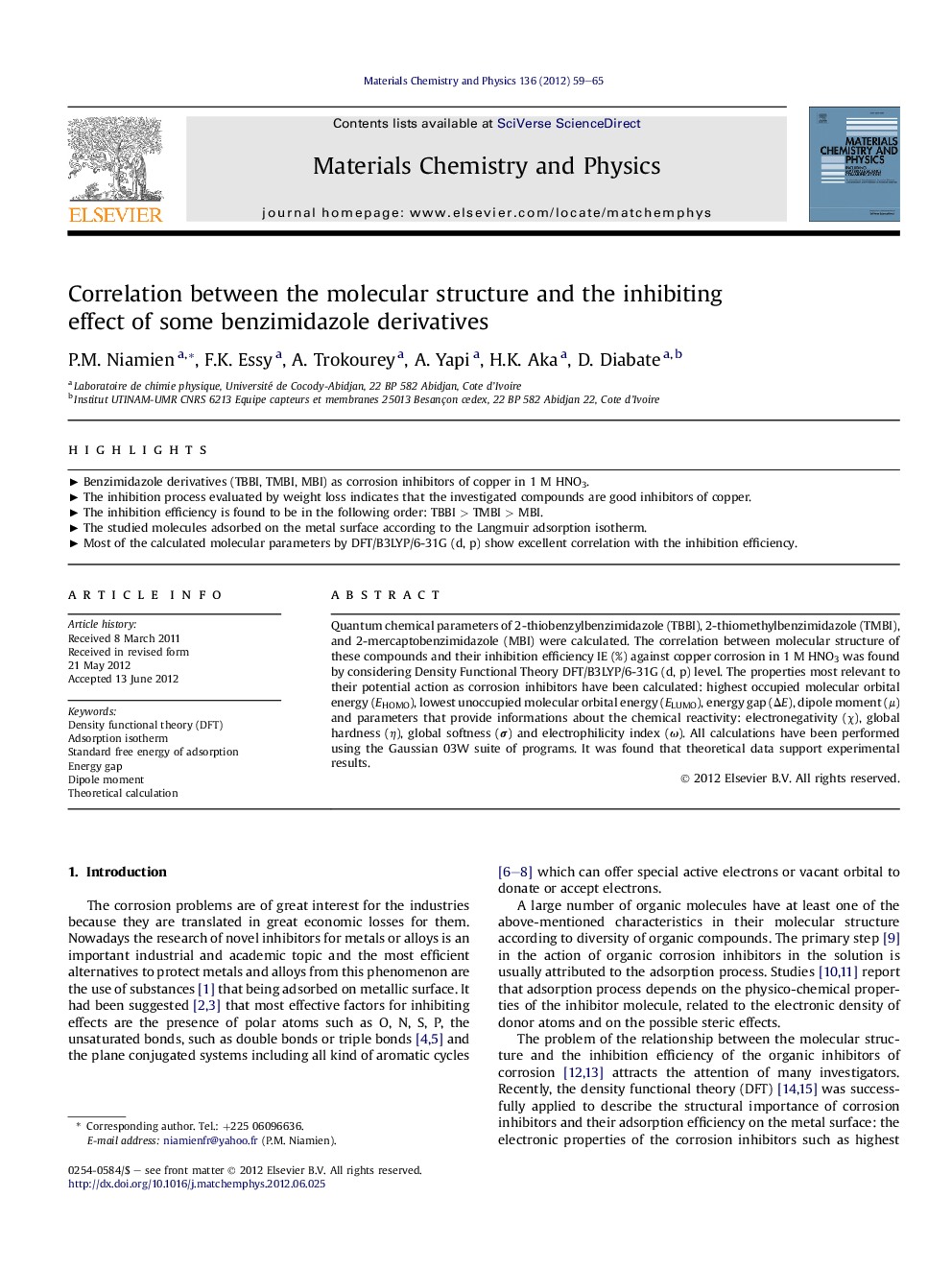| Article ID | Journal | Published Year | Pages | File Type |
|---|---|---|---|---|
| 1523776 | Materials Chemistry and Physics | 2012 | 7 Pages |
Quantum chemical parameters of 2-thiobenzylbenzimidazole (TBBI), 2-thiomethylbenzimidazole (TMBI), and 2-mercaptobenzimidazole (MBI) were calculated. The correlation between molecular structure of these compounds and their inhibition efficiency IE (%) against copper corrosion in 1 M HNO3 was found by considering Density Functional Theory DFT/B3LYP/6-31G (d, p) level. The properties most relevant to their potential action as corrosion inhibitors have been calculated: highest occupied molecular orbital energy (EHOMO), lowest unoccupied molecular orbital energy (ELUMO), energy gap (ΔE), dipole moment (μ) and parameters that provide informations about the chemical reactivity: electronegativity (χ), global hardness (η), global softness (σ) and electrophilicity index (ω). All calculations have been performed using the Gaussian 03W suite of programs. It was found that theoretical data support experimental results.
► Benzimidazole derivatives (TBBI, TMBI, MBI) as corrosion inhibitors of copper in 1 M HNO3. ► The inhibition process evaluated by weight loss indicates that the investigated compounds are good inhibitors of copper. ► The inhibition efficiency is found to be in the following order: TBBI > TMBI > MBI. ► The studied molecules adsorbed on the metal surface according to the Langmuir adsorption isotherm. ► Most of the calculated molecular parameters by DFT/B3LYP/6-31G (d, p) show excellent correlation with the inhibition efficiency.
